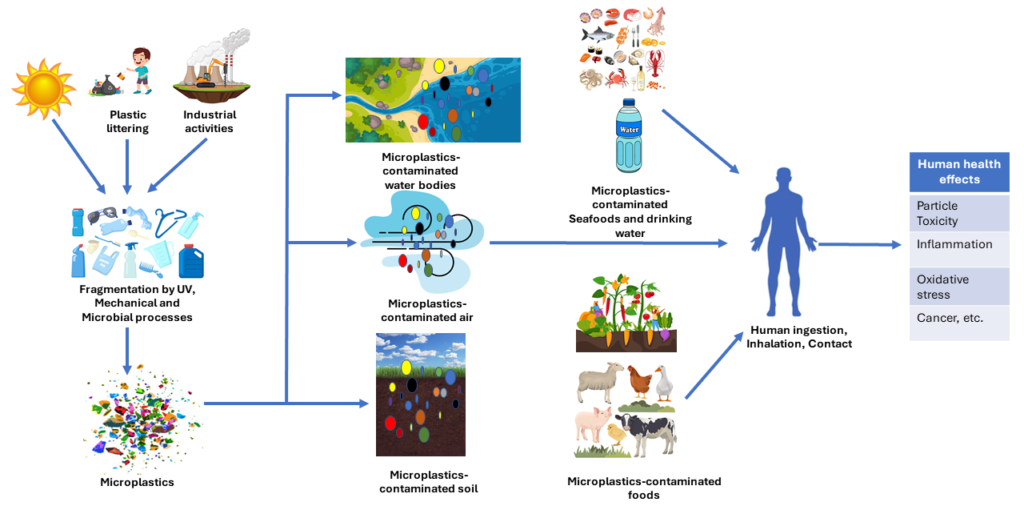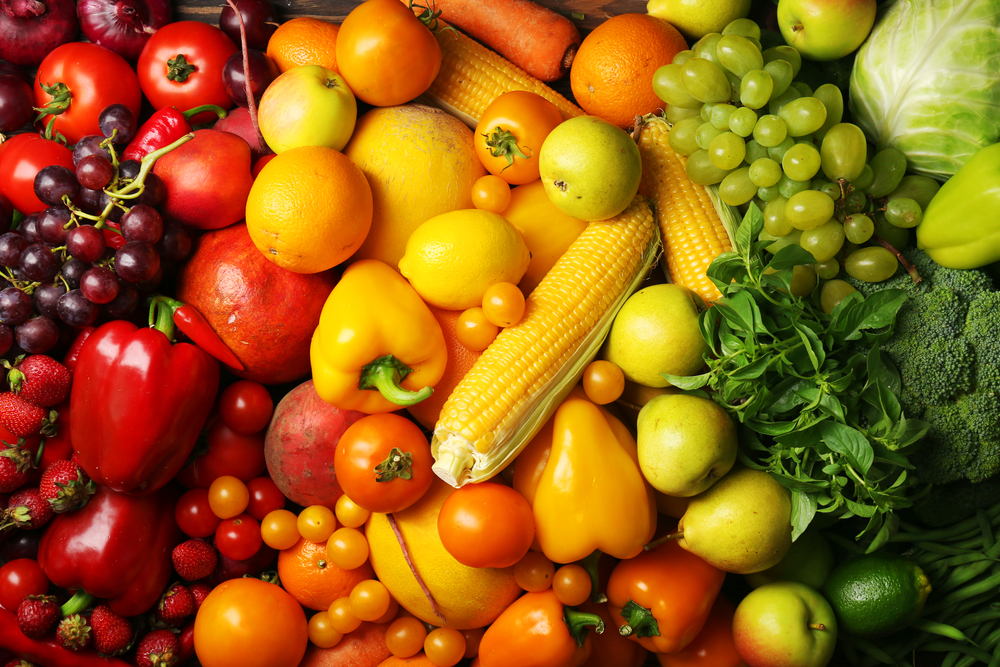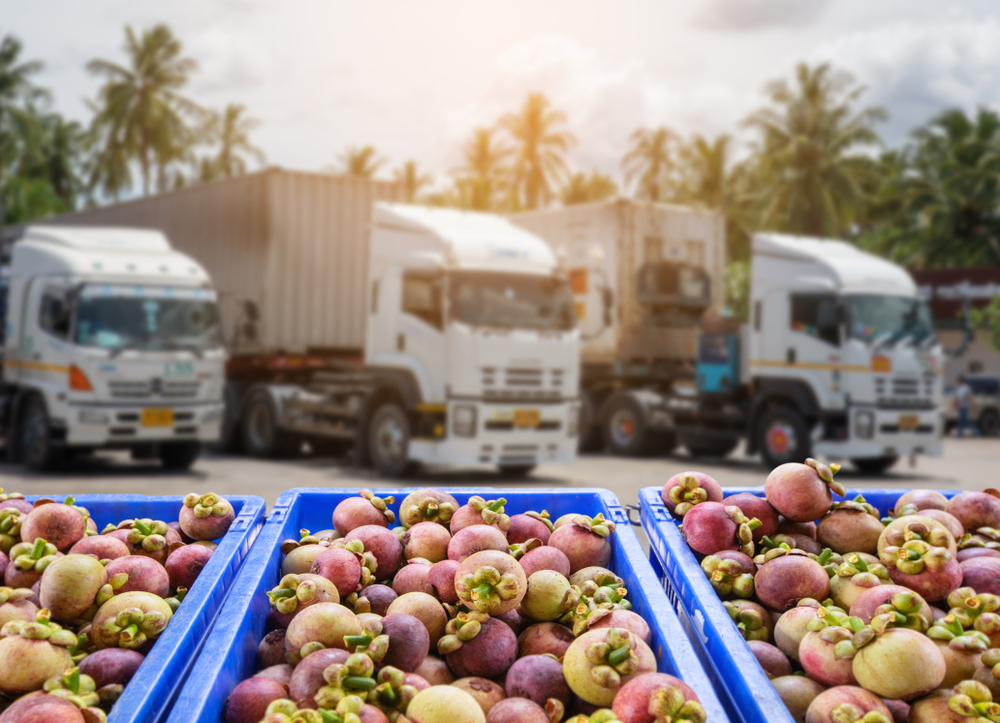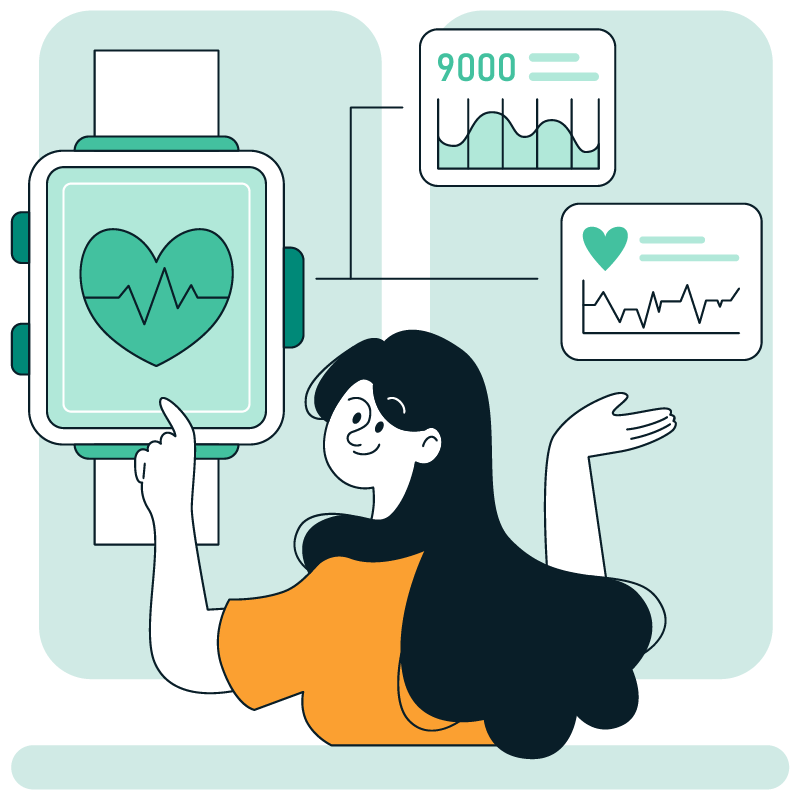Imagine walking along your favourite beach, feeling the soft sand between your toes and hearing the soothing sound of waves. Now, picture that the beautiful shells and colourful pebbles you see are mixed with tiny, invisible particles too small to see without a microscope. These are microplastics, and they’re becoming a big concern for our planet—and us!
What Are Microplastics?
Microplastics are tiny pieces of plastic, usually less than five millimetres in size. To give you an idea, that’s about the size of a grain of rice or even smaller! These minuscule plastics come from larger plastic items like bottles, bags, and fishing nets that break down over time. They can also come from everyday products like toothpaste, body scrubs and cosmetics, where tiny plastic beads are used for exfoliating and synthetic clothing.
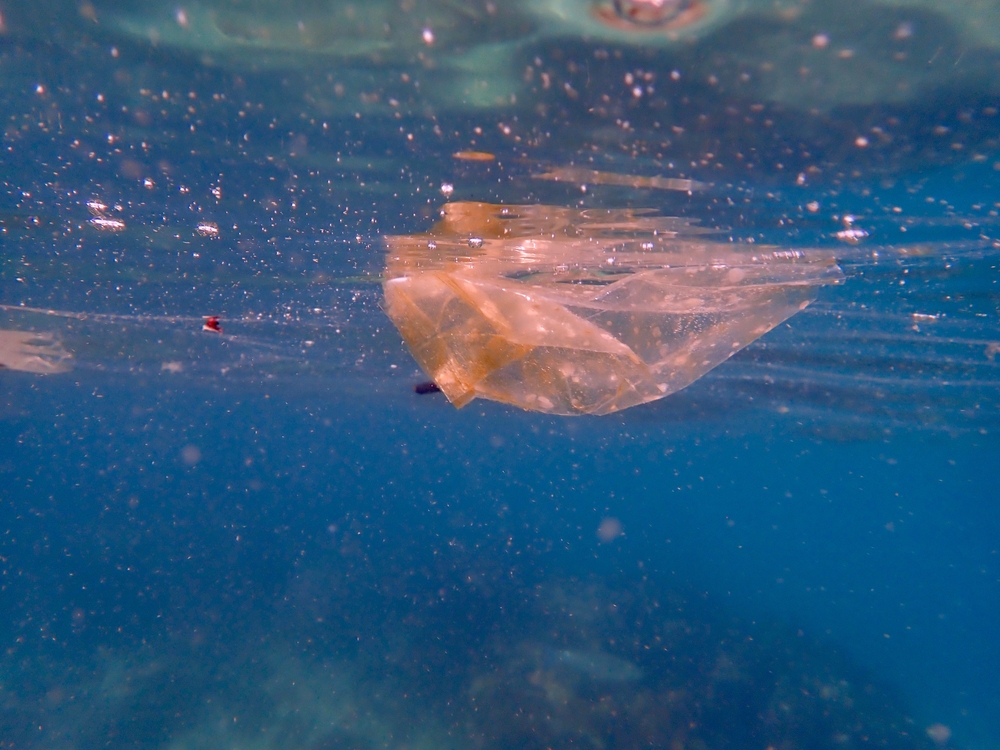
In 2023, approximately 358 trillion microplastic particles were in the world’s waters. Researchers have also estimated that over 14 million tons of microplastics are currently resting on the ocean floor, and we’re finding them in unexpected places like Arctic snow and even inside the fish we eat.
Where Does Microplastics Come From?
Everywhere! Microplastics find their way into our environment through various sources:
Broken Down Plastics: Due to sunlight, wind, and waves, big plastic items like bottles and bags degrade into smaller pieces. Plastic bags, straws, and water bottles contribute to this pollution.
Synthetic Fabrics: When we wash clothes made from synthetic materials like polyester, tiny fibres shed and make their way into rivers and oceans.
Everyday Products: Many personal care products, such as facial cleaners and body washes, contain microbeads — tiny plastic particles that are intentionally added for exfoliation or texture. When rinsed down the drain, these microbeads are often too small to be filtered out by wastewater treatment plants and end up in the environment.
Why Should We Care About Microplastics?
You might wonder why something so small matters. Here is why:
Wildlife at Risk: Marine animals, such as fish, turtles, and even birds, often mistake microplastics for food. Recent studies have shown that over 700 marine species are affected by plastic pollution. Eating these plastics can block their digestive systems, cause internal injuries, and even lead to starvation.
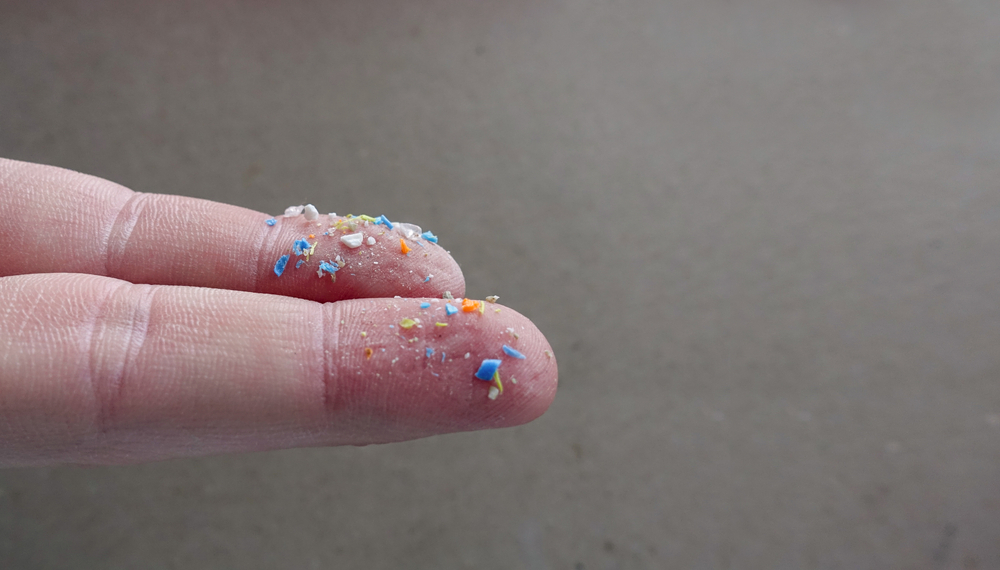
Human Health: Microplastics have been found in the air we breathe, the water we drink, and even the food we eat. Did you know that microplastics are now found in the food we eat, the water we drink, and the air we breathe? A study conducted in 2022 found microplastics in human blood for the first time, raising concerns about potential long-term health effects. Scientists are still studying their impact on our health, but some worry that microplastics might carry harmful chemicals or affect our immune system.
Environmental Impact: Microplastics don’t just float around in the water. They can absorb toxic chemicals from their surroundings. When marine animals eat these plastics, those toxins enter the food chain—eventually reaching us when we consume seafood.
How Do Microplastics Affect Us?
Microplastics do not just stay in the ocean. They travel through rivers, lakes and even reach remote places like the Arctic. When marine animals consume these plastics, the toxins can move up the food chain, potentially reaching humans who eat seafood. For example, research shows that 90% of table salt worldwide contains microplastics. Additionally, microplastics in the air can be inhaled, posing health risks scientists are still exploring.
Research has also found that the average person consumes roughly five grammes of plastic per week or the weight of a credit card. According to other studies, the average person consumes at least 50,000 microplastic particles annually, which is assumed to rise significantly for those who follow extremely processed diets. This poses a great risk to human health.
The illustration above demonstrates the journey of microplastics from their sources to their impact on human health. It begins with plastic littering and industrial activities that contribute to the presence of large plastic debris in the environment. These plastics undergo fragmentation due to ultraviolet (UV) radiation, mechanical forces, and microbial action, breaking down into microplastics. These tiny particles contaminate water bodies, air, and soil. Microplastics are then absorbed by various food sources such as seafood, plants, and livestock, ultimately entering the human body through ingestion, inhalation, or contact. The image highlights potential microplastic health risks, including particle toxicity, inflammation, oxidative stress, and cancer. This depiction emphasises the pervasive nature of microplastics and the need for mitigation efforts to protect both environmental and human health.
What Can We Do to Reduce Microplastics?
Good news! There are many ways we can help reduce the amount of microplastics in our environment:
- Reduce Plastic Use: Use reusable bags, bottles, and containers instead of single-use plastics.
- Proper Disposal: Make sure to recycle plastics properly and support products with minimal packaging.
- Choose Natural Fabrics: Choose clothes from natural fibres like cotton, wool, or linen to minimise fibre shedding.
- Support Bans on Microbeads: Encourage using products that don’t contain plastic microbeads, such as natural exfoliants in cosmetics. Check your cosmetics for ingredients like “polyethene” or “polypropylene” and choose natural alternatives instead.
- Spread Awareness: Share information about microplastics with friends and family.
Get Involved!
You can make a difference by spreading the word about microplastics. Here are some fun ideas:
- School Projects: Create posters or presentations to educate your classmates about microplastics.
- Host Cleanups: Organise or join a beach or neighbourhood cleanup event to help remove plastics from your local environment.
- Educate Others: Share what you’ve learned with your friends, family, and classmates. Start conversations about how we can all reduce plastic pollution.
- Innovate: Think of creative ways to recycle or reduce plastic use. Perhaps you could design an eco-friendly product or invent a new way to clean up plastic from waterways.
Try This Challenge: Track Your Plastic Use!
Want to make a difference? Try tracking your plastic use for one week. Record how much plastic you use daily—bags, bottles, packaging—and see where you can reduce it. You’ll be surprised at how much you can reduce by making small changes!
Real-world Examples: Microplastics in the News
- Recent Discovery in Human Blood (2022): Scientists detected microplastics in human blood for the first time, sparking concerns about long-term health effects.
- Impact on Marine Life: In a 2020 study, scientists found that 100% of sea turtles examined had microplastics in their digestive systems.
- Global Ban on Microbeads: Many countries, including the UK and the US, have banned using microbeads in cosmetics. This has led to a significant decrease in microplastic pollution from personal care products.
Curious for More?
Microplastics are a fascinating and important topic that affects us all. Learning more and taking action can help protect our planet and its incredible wildlife. So next time you see a plastic bottle or a piece of clothing, think about its journey and how you can be part of the solution to keep our world clean and healthy.
Stay curious, stay informed, and let’s work together to tackle the tiny trouble of microplastics!

